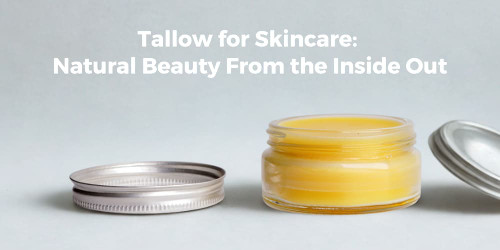How do I know if menstrual cups are right for me?
Choosing whether to use menstrual cups is a personal decision that depends on your individual preferences, lifestyle, and comfort level. Here are some factors to consider when deciding if menstrual cups are the right choice for you:
Health and Safety: Menstrual cups are generally safe to use, but it's important to ensure that you can follow the necessary hygiene practices. Cups should be cleaned properly between uses, and you should feel comfortable with the idea of inserting and removing the cup from your vagina.
Comfort: Menstrual cups can take some time to get used to, especially if you're new to using internal menstrual products. Consider whether you are comfortable with the sensation of inserting and wearing a cup. It may be helpful to start with a smaller size and gradually move up if needed.
Menstrual Flow: Menstrual cups are suitable for most menstrual flow levels, but they may require more frequent emptying and cleaning if you have a heavy flow. If you have a particularly heavy flow, you might want to consider a cup with a higher capacity.
Sustainability and Cost: Menstrual cups are reusable and can last for several years, making them an eco-friendly alternative to disposable menstrual products. While the upfront cost of a menstrual cup may be higher, it can be cost-effective in the long run compared to purchasing disposable pads or tampons regularly.
Lifestyle and Activities: Consider your lifestyle and the activities you engage in during your period. Menstrual cups can be worn for up to 12 hours, depending on your flow, which can be convenient for those with busy schedules or who don't have frequent access to restrooms.
Allergies and Sensitivities: Some individuals may have allergies or sensitivities to the materials used in menstrual cups, such as silicone or latex. If you have known allergies, it's essential to check the cup's material and ensure it's suitable for you.
Environmental Impact: If you are concerned about reducing waste and minimizing your environmental footprint, using a reusable menstrual cup can be an excellent choice as it significantly reduces the amount of disposable waste generated during your period.
Before making a decision, you may want to consult with your healthcare provider or gynecologist, who can provide personalized advice based on your specific needs and health considerations. Additionally, reading reviews and talking to others who use menstrual cups can give you a better understanding of the pros and cons associated with this menstrual product.
If you're considering using a menstrual cup, the following frequently asked questions (FAQs) may provide you with helpful information:
What is a menstrual cup?
A menstrual cup is a reusable menstrual product made of medical-grade silicone, latex, or elastomer. It is inserted into the vagina to collect menstrual fluid instead of absorbing it like tampons or pads.
How do menstrual cups work?
Menstrual cups are flexible, bell-shaped cups made of silicone or rubber that are inserted into the vagina to collect menstrual fluid. The cup forms a seal with the vaginal walls, preventing leaks. When full, the cup is removed, emptied, rinsed, and reinserted.
Are menstrual cups safe?
Yes, menstrual cups are generally considered safe to use. However, it's important to follow the instructions for insertion, removal, and cleaning to minimize the risk of infection. It's also recommended to empty and clean the cup at least every 8-12 hours, or as per the manufacturer's instructions.
Can I use a menstrual cup if I'm a virgin?
Yes, it's possible to use a menstrual cup if you're a virgin. Menstrual cups are designed to be inserted into the vagina, and the hymen can stretch or have an opening large enough to accommodate the cup. However, it's important to be gentle during insertion and removal to avoid discomfort.
How do I choose the right menstrual cup size?
Choosing the right size depends on factors like age, childbirth history, and flow. Most manufacturers provide guidelines for selecting the appropriate size based on these factors. It's recommended to start with a smaller size if you're unsure and switch to a larger size if needed.
Can I use a menstrual cup overnight?
Yes, menstrual cups can be worn overnight for up to 8-12 hours, depending on your flow. It's important to empty and clean the cup before bedtime and after waking up to maintain hygiene.
Will using a menstrual cup be uncomfortable?
Some individuals may experience discomfort or a learning curve when using menstrual cups for the first time. However, with practice and proper insertion, most people find them comfortable to wear. If you experience persistent discomfort or pain, it's advisable to consult a healthcare professional.
Can I exercise or swim with a menstrual cup?
Yes, menstrual cups are suitable for various physical activities, including exercise and swimming. Once inserted correctly, they form a secure seal that prevents leaks, providing freedom of movement and flexibility.
How long do menstrual cups last?
Menstrual cups are reusable and can last for several years with proper care. However, the lifespan can vary depending on the cup's quality, frequency of use, and maintenance. It's recommended to replace the cup if it shows signs of damage or deterioration.
How to use Menstrual Cup?
1. Wash your hands: Begin by washing your hands thoroughly with soap and water to ensure cleanliness.
2. Choose a comfortable position: Find a comfortable position that works for you. You can either stand with one leg raised, squat, sit on the toilet, or try different positions until you find what works best.
3. Fold the cup: Fold the menstrual cup using one of the popular folding techniques. Two common folds are the "C-fold" and the "Punch-down fold." Please see more folding methods below and experiment with both to see which one works better for you.
4. Hold the folded cup: Hold the folded cup with your thumb and forefinger, ensuring a firm grip.
5. Relax and insert: Take a deep breath and relax your pelvic muscles. Gently separate your labia with your free hand and guide the folded cup into your vaginal opening at a 45-degree angle.
6. Insert the cup: Slowly insert the cup into your vagina until the entire cup is inside. The stem of the cup should be left outside the vagina for easy removal.
7. Allow the cup to open: Once the cup is inside, let it unfold by gently rotating it or running your finger along the outside of the cup. This will ensure a proper seal and prevent leaks. Tip: You will know once the cup is locked once you hear a pop sound.
8. Check the placement: Use your finger to feel around the base of the cup and ensure it has fully opened and created a seal. If needed, give it a gentle tug to ensure it is secure.
9. Comfort check: You should not feel any discomfort or pain when the cup is properly inserted. If you feel any discomfort, remove and reinsert it.

How to remove Menstrual Cup?
1. Wash your hands: Begin by washing your hands thoroughly with soap and water. This helps ensure cleanliness and hygiene during the removal process.
2. Find a comfortable position: Choose a comfortable position that suits you. You can either sit on the toilet, squat down, or stand with one leg raised on a stable surface. Experiment and find the position that works best for you.
3. Relax your muscles: Take a few deep breaths and consciously relax your pelvic muscles. This will make the removal process easier and more comfortable.
4. Locate the base of the cup: Gently insert your index finger into your vagina until you can feel the base of the menstrual cup. The base will typically feel round and may have a stem or a small tab.
5. Break the seal: To remove the cup, you need to break the seal it has created with the vaginal walls. You can do this by pinching the base of the cup with your thumb and forefinger or by inserting a finger alongside the cup and pressing the rim. This action will release the suction.
6. Slowly remove the cup: Once the seal is broken, gently and slowly pull the cup out of your vagina. Try to keep it upright to avoid spilling the contents. If you're having difficulty removing it, relax and take your time. Don't rush or panic.
7. Empty and clean the cup: Once the cup is out, empty the contents into the toilet or sink. Rinse the cup with warm water or use a mild, unscented soap to clean it thoroughly. Be sure to follow the manufacturer's instructions for cleaning and care.
8. Reinsert or store the cup: After cleaning, you can either reinsert the cup immediately if it's during your menstrual cycle or store it in a breathable, clean container until your next use. Avoid storing it in an airtight or non-breathable container.















